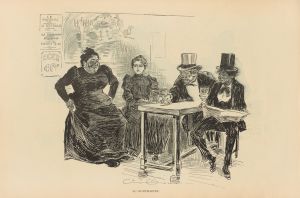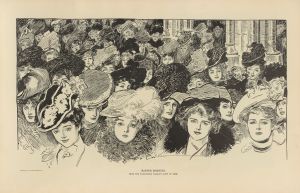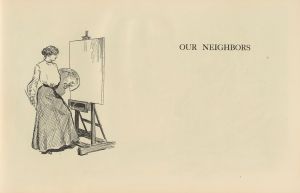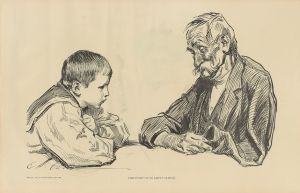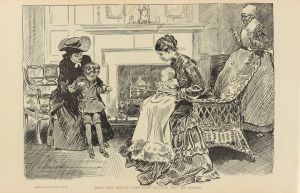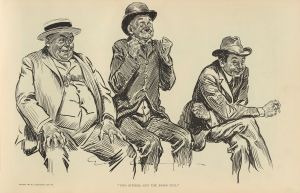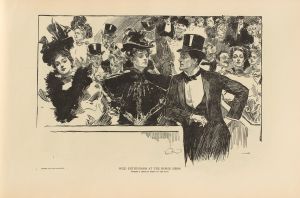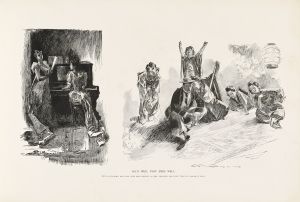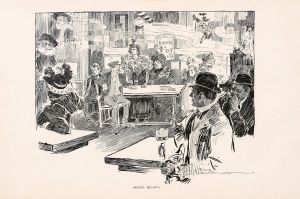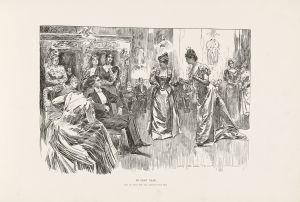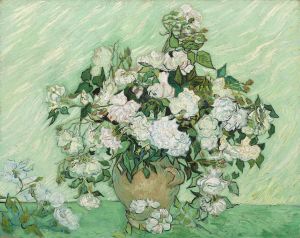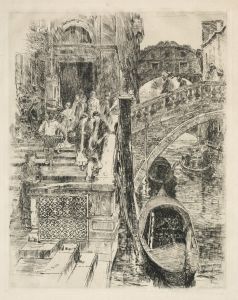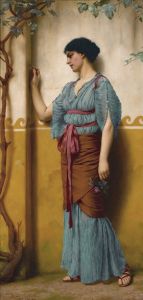
Lost
A hand-painted replica of Charles Dana Gibson’s masterpiece Lost, meticulously crafted by professional artists to capture the true essence of the original. Each piece is created with museum-quality canvas and rare mineral pigments, carefully painted by experienced artists with delicate brushstrokes and rich, layered colors to perfectly recreate the texture of the original artwork. Unlike machine-printed reproductions, this hand-painted version brings the painting to life, infused with the artist’s emotions and skill in every stroke. Whether for personal collection or home decoration, it instantly elevates the artistic atmosphere of any space.
Charles Dana Gibson was an influential American illustrator best known for his creation of the "Gibson Girl," a representation of the idealized American woman at the turn of the 20th century. While Gibson's work primarily focused on illustrations for magazines and books, he also created standalone pieces, one of which is titled "Lost."
"Lost" by Charles Dana Gibson is a black-and-white illustration that exemplifies his signature pen-and-ink style. Gibson's illustrations were renowned for their detailed line work and the ability to convey complex emotions and narratives through simple, monochromatic imagery. His work was widely published in popular magazines of the time, such as Life, Harper's Weekly, and Scribner's, which helped to cement his reputation as a leading illustrator of his era.
The illustration "Lost" captures a poignant moment, often interpreted as a scene of emotional depth and introspection. While specific details about the context or inspiration behind "Lost" are not extensively documented, it is consistent with Gibson's broader body of work, which frequently explored themes of social interaction, gender roles, and the subtleties of human expression.
Gibson's illustrations, including "Lost," often featured characters that were elegantly dressed, reflecting the fashion and social norms of the late 19th and early 20th centuries. His work was not only a reflection of the societal ideals of beauty and sophistication but also a commentary on the evolving roles of women during this period. The "Gibson Girl," in particular, became an iconic symbol of the independent and confident American woman, and while "Lost" may not directly depict a "Gibson Girl," it shares the same artistic qualities and thematic concerns.
Charles Dana Gibson's influence extended beyond his illustrations. He played a significant role in shaping the visual culture of his time, and his work continues to be studied for its artistic merit and cultural significance. His ability to capture the nuances of human emotion and societal trends in his illustrations has left a lasting legacy in the field of art and illustration.
While "Lost" may not be as widely recognized as some of Gibson's other works, it remains an example of his skill in using illustration to convey complex narratives and emotions. The piece reflects his mastery of the pen-and-ink medium and his keen observation of the human condition, characteristics that have earned him a prominent place in the history of American art.
In summary, "Lost" by Charles Dana Gibson is a testament to the artist's ability to blend technical skill with insightful commentary on society. Though specific details about the illustration's creation and reception are limited, it stands as a part of Gibson's broader oeuvre that continues to be appreciated for its artistic and cultural contributions.





